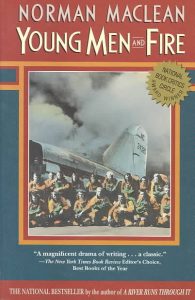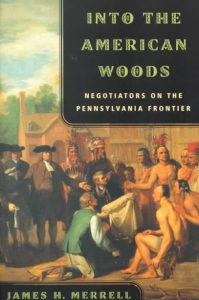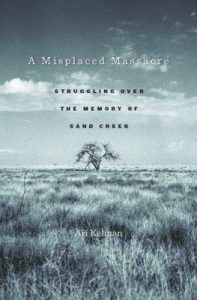Elzbieta Plackowska, forty-five years old, was convicted late in September for murdering her seven-year old son Justin and a five-year old girl, Olivia Dworakowski, who she was babysitting. The crime occurred more than five years ago, on 30 October 2012.  After telling the children to get down on their knees to pray, she started after them with a pair of kitchen knives. She stabbed Justin more than one hundred times, then slashed his throat. Olivia she stabbed more than fifty times. Her throat was cut as well. She also stabbed to death two dogs that were in the apartment. It was a horrifying crime, and I find it difficult to comprehend the terrifying last moments in the lives of those two children.
After telling the children to get down on their knees to pray, she started after them with a pair of kitchen knives. She stabbed Justin more than one hundred times, then slashed his throat. Olivia she stabbed more than fifty times. Her throat was cut as well. She also stabbed to death two dogs that were in the apartment. It was a horrifying crime, and I find it difficult to comprehend the terrifying last moments in the lives of those two children.
For the past several years, I have told the students in my Humanities course this harrowing tale. I do so as part of our discussion of Augustine’s Confessions. I spend three days discussing The Confessions. One of the many topics Augustine wrestled with was the problem of evil. The Manicheans, with whom Augustine spent a lot of time, had one explanation for the existence of evil but this answer left Augustine dissatisfied and unmoved.
In his attempts to understand the nature of God and the relationship between an all-powerful and good God and the existence of evil, Augustine concluded that the farther away from God something was, the more disordered it became, and more scattered and fleeting. The notion was Platonic. Heaven is close to God, human souls and minds are a step farther away, and bodies, the world of flesh and materiality, farther away still. This conceptualization allowed Augustine to deal with the problem of evil in a way that made sense to him. Evil, he wrote, “is nothing but the diminishment of good to the point where nothing at all is left.”
I want the students to think about this. I ask them for their definitions of evil. They usually answer with cases, as in “Stalin was evil,” or the latest mass shooter is evil. I wonder whether they think Augustine’s definition is helpful. Does it help them comprehend the acts of which they speak. Does his definition work for them? The brutality of the twentieth century, in the closing years of which these students were born: what of that? Does Augustine’s explanation of evil allow us to understand Hitler, Rwanda, Pol Pot, and Jeffrey Dahmer?
So I ask them about Elzbieta Plackowska. I tell them her story. Is she evil? Does Augustine’s explanation provide us with what we need to make sense of so senseless an act of violence?
The story often stuns the students. I can see that reaction very clearly and very powerfully. Certainly they did not see this story coming. So many of them are young and sensitive and some of them are overpowered by it. There is usually some silence before anybody speaks. Invariably someone mumbles out something quietly about insanity and, indeed, I point out that Plackowska’s attorneys attempted an insanity defense. I try to let the conversation go. Do we call “insane” what people in an earlier time might have called “evil”? Is the institutional and diagnostic apparatus of psychology, applied to the criminal justice system, just an attempt to explain the inexplicable, to make sense of the senselessness of nightmarish violence?
I do not know enough about the history of psychology to answer that question, but I do want the students to think about the issues Augustine–and Elzbieta Plackowska’s knee-buckling acts of violence–present.
I always have loved Norman Maclean’s Young Men and Fire, but I disagree to some extent with his criticism of historians and the very discipline of history. We historians, he suggested, are reluctant to go to the edge, and go beyond the strict confines of “what happened” and  “who” and “why” and “where.” We pull back from the big, existential questions. In the case of Maclean, we do not attempt to get inside the heads of the impetuous young men who died fighting the Mann Gulch Fire in Montana in 1949. In his attempt to uncover and imagine their dying thoughts, Maclean believed, one might find meaning and wisdom. He did, and the result is an absolutely beautiful meditation on fire and the meaning of life.
“who” and “why” and “where.” We pull back from the big, existential questions. In the case of Maclean, we do not attempt to get inside the heads of the impetuous young men who died fighting the Mann Gulch Fire in Montana in 1949. In his attempt to uncover and imagine their dying thoughts, Maclean believed, one might find meaning and wisdom. He did, and the result is an absolutely beautiful meditation on fire and the meaning of life.
Historians, however, do more of this than Maclean believed. I think here of Martha Hodes’ gorgeous The Sea Captain’s Wife and Rachel Hope Cleves’ Charity and Sylvia, both of which are books that sit on my shelf close to Maclean’s. In my own work, I wrestled with some of this in my book on Roanoke, The Head in Edward Nugent’s Hand, and in my attempts to understand how it was that a Mohawk missionary to the Oneidas decided one day to begin claiming that he was the long lost child of Marie Antoinette and Louis XVI.
But if you look at history as it’s taught to young people, there is abundant evidence to support Maclean’s critique. Filling in blanks, bubbling in scan-tron forms, clicking on one of a number of choices–and, indeed, the way that history is presented in all-too-many textbooks–it leaves students with the sense that history really is little more than a series of events and facts to be mastered and remembered. 
And I do find when my students in history courses work on their research projects, sometimes they pull back from the suffering, the evil that may exist at the heart of their story. When I encounter these students, I urge them to read parts of James Merrell’s Into the American Woods, the most beautifully and powerfully written piece of serious scholarship in my field that I have read in a great many years. His treatment of massacre of the peaceful, but suspected, Christian Indians by the “Paxton Boys” late in 1763 informed what I wrote about this event in Native America. I did not want my readers to think that “this thing happened and it was really, really bad,” but rather to understand what it was like, not just to be there, but to have been a participant in the event, a victim, or a perpetrator. Merrell does this so well. It is a wise, but very dark book.
Next week, in my Native American history survey course, I will discuss with my students “Indian Affairs in the Civil War Years.” The title for that day’s meeting, I admit, needs some work. The students will read a chunk of Native America, a handful of documents on federal Indian policy from the annual report of the Commissioner of Indian Affairs, and documents on the Dakota War in Minnesota in 1862 and the Sand Creek Massacre in southern Colorado in November of 1864. I spend most of the hour on Sand Creek. I place on a Powerpoint slide an excerpt from a letter written by Silas Soule, a soldier in Colonel Chivington’s force, who refused to obey his commanding officer’s order to kill all the Indians at Sand Creek. In a letter to his family written a short time after the slaughter, Soule wrote:
“The massacre lasted six or eight hours, and a good many Indians escaped. I tell you Ned it was hard to see little children on their knees have their brains beat out by men professing to be civilized. One squaw was wounded and a fellow took a hatchet to finish her, she held her arms up to defend her, and he cut one arm off, and held the other with one hand and dashed the hatchet through her brain. One squaw with her two children, were on their knees begging for their lives of a dozen soldiers, within ten feet of them all, firing –when one succeeded in hitting the squaw in the thigh, when she took a knife and cut the throats of both
children, and then killed herself. One old squaw hung herself in the lodge –there was not enough room for her to hang and she held up her knees and choked herself to death. Some tried to escape on the Prairie, but most of them were run down by horsemen. I saw two Indians hold one of another’s hands, chased until they were exhausted, when they kneeled down, and clasped each other around the neck and were both shot together. They were all scalped, and as high as half a dozen taken from one head. They were all horribly mutilated. One woman was cut open and a child taken out of her, and scalped.
White Antelope, War Bonnet and a number of others had Ears and Privates cut off. Squaw’s snatches were cut out for trophies. You would think it impossible for white men to butcher and mutilate human beings as they did there, but every word I have told you is the truth, which they do not deny. It was almost impossible to save any of them.”
Apparently there is a movie about Soule. Who knew? If you have seen it, I would love to hear your thoughts. Soule is an attractive hero, a compelling character. He testified against his fellow soldiers and his commander. He was murdered shortly thereafter in Denver. Nobody was ever tried for the crime, and his murder went unpunished.
Shocking stuff, to be sure. Sometimes students will shake their heads, dismayed or disgusted or disturbed by Soule’s words. But I urge them to go further. Into the woods. Why did this event happen in this way? Why did these horrible deeds occur?  Most accounts of Sand Creek,with the exception of Ari Kelman’s masterful A Misplaced Massacre, will describe how the Cheyenne and Arapaho at Sand Creek were no threat, were attempting to comply with orders and were caught completely unaware. Chivington was a bad guy and he was roundly criticized in the east afterwards. But what about the rest of his men, those who took trophies, and cut up bodies, and murdered those who begged to be spared? Why did these Colorado soldiers make this choice? And what of the crowds at the Denver Opera House, who cheered when scalps taken from the slain were presented to them during intermission?
Most accounts of Sand Creek,with the exception of Ari Kelman’s masterful A Misplaced Massacre, will describe how the Cheyenne and Arapaho at Sand Creek were no threat, were attempting to comply with orders and were caught completely unaware. Chivington was a bad guy and he was roundly criticized in the east afterwards. But what about the rest of his men, those who took trophies, and cut up bodies, and murdered those who begged to be spared? Why did these Colorado soldiers make this choice? And what of the crowds at the Denver Opera House, who cheered when scalps taken from the slain were presented to them during intermission?
They were racist, no doubt. The students have no difficulty in drawing that conclusion. But there are racists everywhere, I tell them. You might know some, I say. But they do not always pull out their guns and shoot babies in the face. They do not castrate the dead, carrying off their prizes as tobacco pouches, or mutilate the bodies of the women they killed. How did these men get there? How does anyone get there? War, Thucydides once said, “is a violent teacher.” What lessons do acts like these leave us with?
The value of our endeavors as historians, the worth of the historical enterprise, might be measured by how well we can explain these brutal realities, and draw out their dark lessons. We who write about and study the history of native peoples, we need to go to the black heart of the frontier experience, of colonialism, and injustice. We must do more than decry how awful these events were. We must teach them, and reach as far into the darkness as we can to understand them, and help others to do so as well.
So, Elzbieta Plackowska. The officers who responded to the crime scene were shattered by what they saw. Many of them needed counseling. How could she have done this? She claimed at first that she was attacked by a black man, that it was a home invasion. She said as well that the children were possessed, that they took the shape of demons, or that she lost control of herself. There was evidence as well that she resented her husband, a long-haul truck driver, that she was deeply alone and wanted to hurt him in the worst way that she could imagine. If that is what motivated her, then I suspect she succeeded. But lots of husbands and wives resent their spouses, and they don’t all do this. In the end, I do not know what was going through Elzbieta Plackowska’s mind when she picked up those knives, but I do know that labeling this act as evil, or insane, or deranged or whatever word you want to use, doesn’t help me get closer to finding the meaning of this event, and learning its dark lessons about who and what we are.
